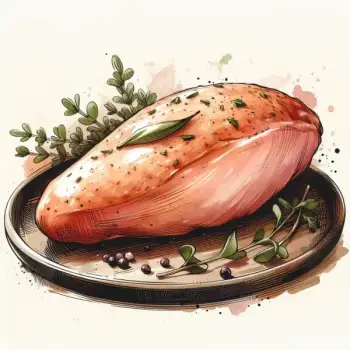


Fresh
Turkey breast sold as a whole piece, either bone-in or boneless, often raw and requiring full cooking.
Frozen
Turkey breast that has been frozen to preserve freshness, available both raw and pre-cooked for various uses.
Ground
Raw turkey breast that has been ground, suitable for making burgers, meatballs, or as a substitute for ground beef.
Sliced
Pre-cooked and sliced turkey breast, commonly found in deli sections, convenient for sandwiches and salads.




fresh turkey breast: Butterball
frozen turkey breast: Butterball
ground turkey breast: Jennie-O
sliced turkey breast: Boar's Head

Grilling: Grilling turkey breast imparts a smoky flavor and can be a quicker option. Marinate or rub the turkey breast with herbs and spices before grilling over medium heat. Keep a close eye to avoid charring and cook until the internal temperature reaches 165°F (74°C).
Roasting: Roasting is a traditional and popular method for cooking turkey breast. To achieve a moist and flavorful result, cook the turkey breast at a lower temperature, such as 325°F (165°C), until it reaches an internal temperature of 165°F (74°C). Covering the breast with foil for part of the cooking time can prevent excessive browning and drying out.
Sous Vide: For the more adventurous cook, sous vide is a method that ensures even cooking and retains moisture. Cook the turkey breast in a vacuum-sealed bag at a precise temperature, typically around 145°F (63°C) for 1-4 hours, then quickly sear it in a hot pan for a flavorful crust.



